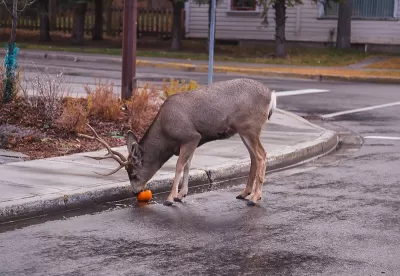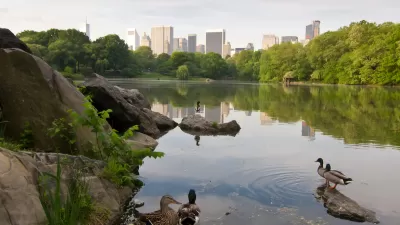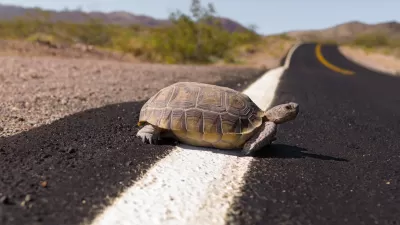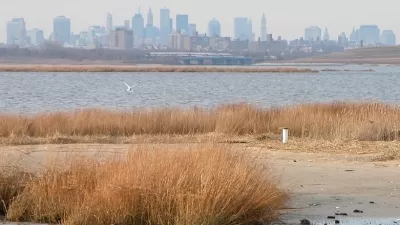The pandemic induced an accidental 'rewilding' in many places as animals took over cities and streets devoid of humans. As we emerge from our isolation, can we co-exist peacefully?

Writing from the perspective of an urban deer observing our post-pandemic return to a world where animals have repopulated areas they'd previously abandoned, John Yunker reminds us that "rewilding is a two-way street. As we become more visible, especially in places you’ve never seen us, you may need to rewild your own worldview." To keep newly visible wildlife safe and comfortable among us, Yunker writes, we must slow down when driving our cars, keep our eyes open, and accept a few creatures nibbling on our lawns or gardens.
"Rewilding is not just about letting a few species run free far away from human civilization. It’s about allowing our world to cross over into your world." According to the Rewilding Institute, "rewilding is comprehensive, often large-scale, conservation effort focused on restoring sustainable biodiversity and ecosystem health by protecting core wild/wilderness areas, providing connectivity between such areas, and protecting or reintroducing apex predators and highly interactive species (keystone species)." Rewilding can promote regeneration and resiliency with minimal human intervention.
The upside for humans, Yunker says, is huge: "As you return to your offices and begin to daydream about escaping into the wilderness, take a moment to gaze out your window. The wilderness is coming to you."
FULL STORY: Rewilding is a two-way street

Planetizen Federal Action Tracker
A weekly monitor of how Trump’s orders and actions are impacting planners and planning in America.

Maui's Vacation Rental Debate Turns Ugly
Verbal attacks, misinformation campaigns and fistfights plague a high-stakes debate to convert thousands of vacation rentals into long-term housing.

San Francisco Suspends Traffic Calming Amidst Record Deaths
Citing “a challenging fiscal landscape,” the city will cease the program on the heels of 42 traffic deaths, including 24 pedestrians.

Amtrak Rolls Out New Orleans to Alabama “Mardi Gras” Train
The new service will operate morning and evening departures between Mobile and New Orleans.

The Subversive Car-Free Guide to Trump's Great American Road Trip
Car-free ways to access Chicagoland’s best tourist attractions.

San Antonio and Austin are Fusing Into one Massive Megaregion
The region spanning the two central Texas cities is growing fast, posing challenges for local infrastructure and water supplies.
Urban Design for Planners 1: Software Tools
This six-course series explores essential urban design concepts using open source software and equips planners with the tools they need to participate fully in the urban design process.
Planning for Universal Design
Learn the tools for implementing Universal Design in planning regulations.
Heyer Gruel & Associates PA
JM Goldson LLC
Custer County Colorado
City of Camden Redevelopment Agency
City of Astoria
Transportation Research & Education Center (TREC) at Portland State University
Jefferson Parish Government
Camden Redevelopment Agency
City of Claremont





























